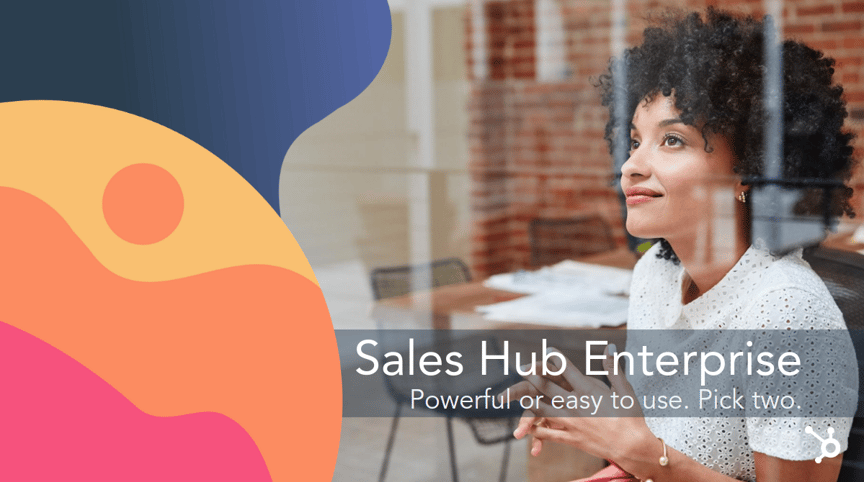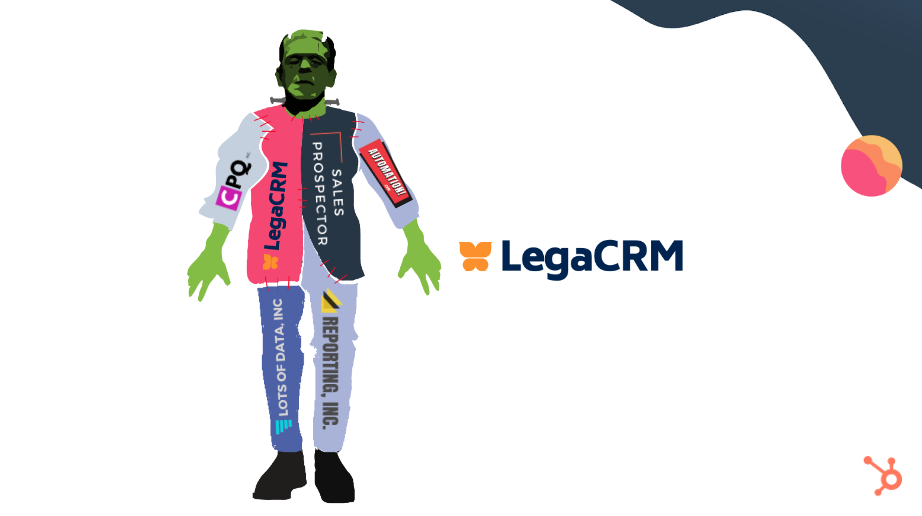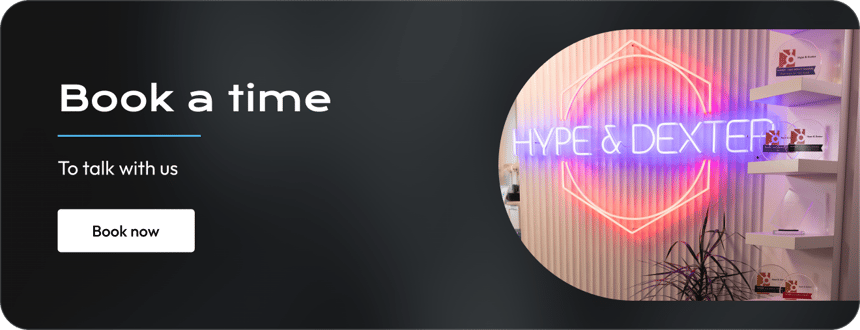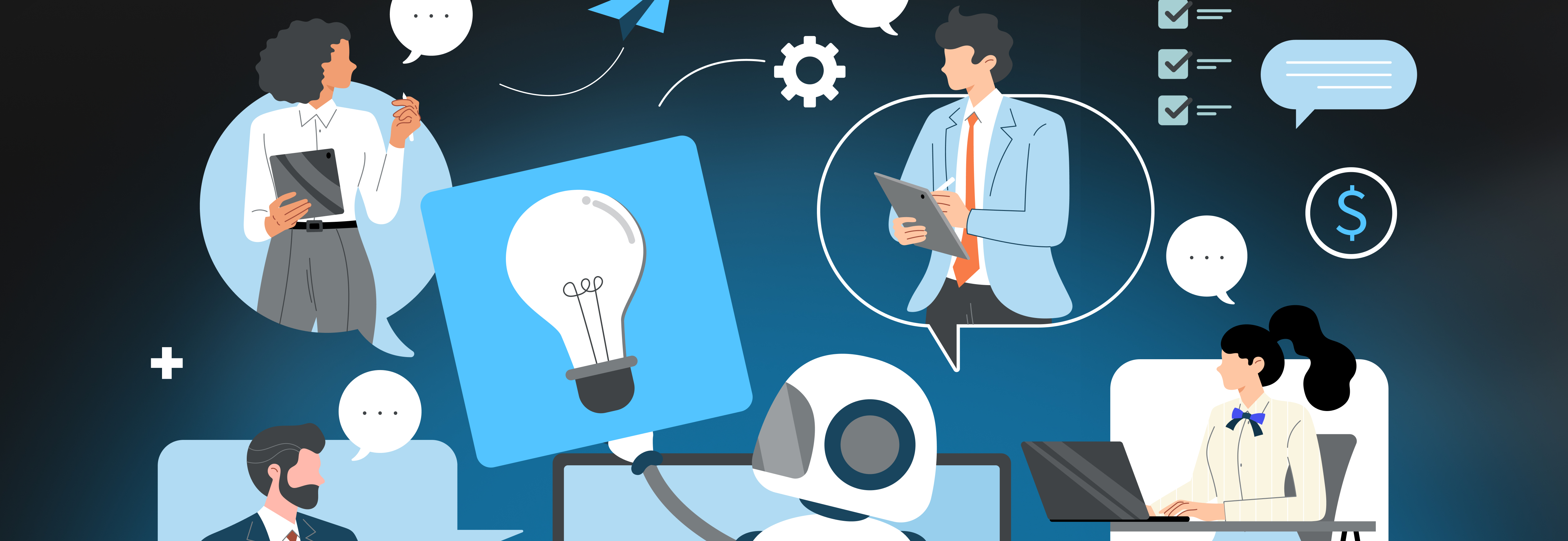At the heart of today's most disruptive companies is customer experience, and at the centre of delivering a service that delights and exceeds expectations, is always your CRM. Your CRM is the centrifugal force that ties together all of the tools, data and infrastructure that enable your sales reps and marketing teams to work in cohesion and bring in leads, personalise communications, close deals and deliver.
With that said, CRMs have been around for a long time (since all the way back in 1986, in fact), and many of the companies that were originally built to design CRM software were built with IT teams and budget holders in mind. With these stakeholders as the focus, CRMs have grown to become clunky and challenging for the end user being asked to actually deliver many of these great customer experiences. Herein lies the common problem that modern companies find with today's CRMs;
- As businesses' 'customer experience requirements' have evolved, some of the CRM companies have 'acquired' other SaaS platforms that specialize in each area rather than building the functionality themselves. Functions like social listening, email automation and detailed reporting are often 'bolted on' to the existing CRM platform.
- In practice, these bloated products offer a 'Frankenstein system' that's difficult to use, and cobbles together too many add-ons, many of which are never actually used.
- Because of this difficulty of use, sales reps, marketers and customer service agents are often still found managing spreadsheets, notepads and other software and apps, rather than using a centralised source of truth.
- At the end of the day, this makes their jobs harder and as a result, delivers an underwhelming customer experience.
Sounding familiar?
That's likely because one of the world's most common CRM platforms (and one which our clients often look to compare with HubSpot) reflects this bloated, Frankenstein model; Salesforce.
It's because of these core issues that the Hype & Dexter team are so thrilled to announce the HubSpot solution to the age-old CRM conundrum; Sales Hub Enterprise. In this blog, we'll break down what the traditional 'Frankenstein CRM' looks like and announce the genuinely game-changing solution that HubSpot has put together this year.
As always, if you have any questions or are keen to get on board, get in touch!
Skip to a section:
The Frankenstein CRM

So what does the 'Frankenstein CRM' look like and how can you identify if this is the software you're working within?
"More than 50% of sales leaders say their CRM is difficult to use" - HubSpot Market Research, June 2020
You'll Have Been Sold a Tonne of Features
Any legacy CRM (Salesforce or otherwise) will tell you it can do just about anything. The reason for this, is as CRM companies have shifted from budget holder and IT focused to meet the dynamic needs of modern CRM users and their customers, they rushed to get features in. When they couldn't keep up, they started acquiring companies and bolting pieces on.
They'll Turn out to Be Surprisingly Incomplete with a Lot of Extras
Another tell-tale sign is once you've bought in, the original claim to be able to do 'any and everything' often turns out to only be true if you buy a long list of add-ons.
If you've looked into or worked within the Salesforce model, you'll be familiar with this already. Over the history of the Salesforce 'Frankenstein' CRM, the company has acquired Steelbrick, Pardot, BuddyMedia, Tableau and Mulesoft - to name a few. These all add to the complexity and 'stitched-together' nature of the software that users struggle with most.
This is actually one of the most overlooked problems with 'Frankenstein' type tech stacks. The cost to maintain the various platforms as well as the high implementation costs and slow turnaround time-frames makes the Frankenstein CRM less and less viable.
We’ve actually found that year one costs of common Frankenstein type CRMs are typically double that of HubSpot, and the cost to add on additional features (Marketing Automation as an example) is significant; there's actually an integration project (which means time and money) just to make the technology work together.
CRM Projects Fail and it's Difficult to Use
Finally, you'll find that you're not using a lot of the features offered and the complexity of the system is causing change-resistance within your sales team.
While the combined features of a Salesforce 'Frankenstein' tech-stack may provide slightly higher reporting and customisation features, it sacrifices usability - and if we’re being honest, these CRMs are significantly more difficult to use.
One of the main reasons CRM projects fail isn’t the people involved, it's the usability of the software. What the majority of businesses need is a consumer-grade front end experience powered by an enterprise-grade back-end. This combination, alongside an experienced partner will ensure the highest chance of user adoption, a successful implementation and ultimately a more efficient business.
The Solution: HubSpot Sales Hub Enterprise

Now that the 'Frankenstein' older CRM model is out of the way, it's time for the exciting stuff! This year, HubSpot has taken the challenges that CRMs have been experiencing for decades and flipped them. Introducing Sales Hub Enterprise.
"In 2020, you no longer have to choose between powerful and easy to use" - HubSpot, 2020
At H&D, we don't get excited by just anything either. Collectively we've worked within the vast majority of the different CRM options out there (from using them to selling them), and rolled out CRM implementations for start up to large enterprises - and we can honestly say this is game changing.
So let's break it down. What is it that actually makes Sales Hub different, and lets us pull off this great magic trick of a powerful and easy to use CRM? It comes down to three things: the product, the platform Sales Hub is built on, and the partner ecosystem.
The HubSpot Product
HubSpot has built Sales Hub Enterprise the way a modern sales CRM should be built, with all of the tools you need in one, centralised place. No more add ons, no more unnecessary fees for features and significantly less complexity.
Here's a snapshot of what makes up the new HubSpot product:
- A powerful, scalable CRM database
- Sales acceleration tools that let reps efficiently manage their day and their outreach
- CPQ tools to help you master the second half of the sales process and close more deals
- Reporting to tie everything together and understand what’s happening in your business
These are the essential building blocks of a great CRM, and in 2020, HubSpot is adding the following revolutionary features to their CRM product:
- Custom objects
- Deep permissions
- Native ABM features
- Today view
- Advanced sequences
- Flexible products
- Sales analytics
- Forecasting tools
If you're keen to hear about the more specific features and changes, check out our update our Custom Objects Blow-by-Blow article, or our Top 5 List of Favourite Features We're Pumped About.
The HubSpot Platform
The next pillar of a successful CRM that HubSpot offers, is that everything is a lot easier to implement because it all works together seamlessly within one unified platform. We're talking sales, marketing, service and CMS all in once space, talking to each other in real time.
Here's how that looks in practice:
- Each Hub shares the same data and user interface, making it consistent and seamless to use and scale with
- The platform extends far beyond sales and can power your entire front office, from your website to marketing automation to your service/support teams.
- Where others have cobbled their solutions together, HubSpot's is hand-crafted so customers don’t miss a beat.
A Broad and Deep Ecosystem
Finally, all of these features are tied together by a unique ecosystem of immense depth and breadth. This ecosystem is where Hype & Dexter fit within the HubSpot CRM offering - we're part of the network of certified partners who can provide any sort of assistance you need regarding your HubSpot rollout.
However if you have more complex requirements or are a large business, Hype & Dexter have been specifically certified by HubSpot as one of two Advanced Implementation Partners in the APAC region to assist businesses looking to implement the Enterprise feautres of HubSpot Sales CRM.
Beyond the partner system, there are hundreds of certified integrations available that give you access to anything you could want or need. This allows for custom solutions to unique situations like complex use cases or specific verticals. But for this, you're not alone either - HubSpot and Hype and Dexter have partners to help you implement and manage the different systems in your tech stack.
Salesforce vs. HubSpot is the CRM version of PC vs. Mac
 (2007: Apple, "Stuffed")
(2007: Apple, "Stuffed")
The Salesforce vs. HubSpot argument is a narrative we're very familiar with, and not unlike the iconic PC vs. Mac analogy.
On one hand, you have a traditional tech stack - it's clunky, it's add-ons are stitched-together haphazardly making it slower and more difficult to use and it's just downright outdated. On the other hand, you've got a sleek, optimised and unified platform that's custom made to work out of the box, with the end user in mind.
While for some, the decision to migrate can be long-winded and heavily weighed - as industry experts who have lived and breathed both, we think the answer really is a no brainer.
If you're in the process of looking at all the CRM software specs and features, while also cross referencing their importance ("Do I actually need this!?") and all the pricing options - download our free CRM comparison tool today!
So what does the future of CRMs look like?
It's time to drop the clunky 'Frankenstein' CRM and adopt a platform that's tailor made to help modern businesses accelerate.
With more features included, the ability to add free users as well as a faster and lower cost implementation, Sales Hub customers can now enjoy a lower cost of ownership vs. other platforms.
But most importantly, HubSpot is faster and easier than other platforms. With HubSpot, you'll be able to get your team up and running in about 90 days. Compare that to the months upon months (and sometimes over a year) that it often takes to get up and running on other platforms, and you’ve got a huge point of leverage that we can lean into.

Want to chat about the benefits of Sales Hub Enterprise?
No problem, we've been working alongside HubSpot to roll out and implement these new features, and frankly, we're pumped about it. We're more than happy to have a chat around how we could help your business out with a new CRM - or upgrade your current one. Just click below!




.jpg)
Comments